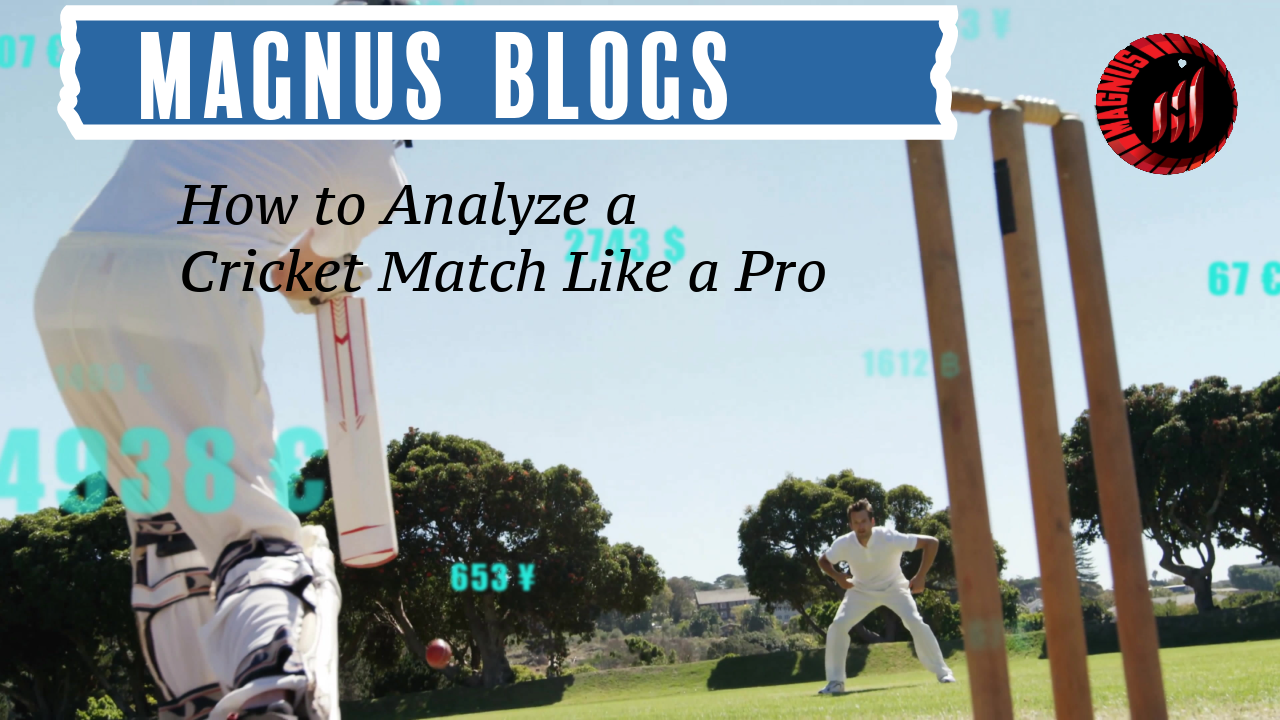Cricket is a game of strategy, skill, and adaptability. Whether you are a player, coach, analyst, or a passionate fan, analyzing a cricket match like a professional requires a keen eye for detail, understanding of game dynamics, and the ability to interpret key statistics.
In this guide, we will break down the essential aspects of cricket match analysis, from pre-match preparation to post-match evaluation, helping you develop a deeper understanding of the game.
1. Pre-Match Analysis: Setting the Context
Before the match begins, a professional analysis starts with understanding the playing conditions, team composition, and strategy.
a) Pitch and Weather Conditions
- Pitch Type: Assess whether the pitch favors batsmen (flat pitch), fast bowlers (green pitch), or spinners (dry/cracked surface).
- Weather Impact: Cloudy conditions help fast bowlers swing the ball, while hot and dry conditions assist spinners.
- Dew Factor: In T20 and ODI night matches, dew can make gripping the ball difficult for bowlers.
b) Team Lineups and Strategies
- Batting Order: Check if the team is playing an aggressive or balanced lineup.
- Bowling Attack: Look at the combination of pacers and spinners based on conditions.
- Key Players: Identify match-winners in both teams.
c) Toss Analysis
- In Tests, winning the toss can be crucial depending on the pitch’s behavior over five days.
- In ODIs and T20s, teams often choose to chase if dew is expected.
2. In-Match Analysis: Observing Key Factors
a) Batting Performance
1. Opening Partnership
- How well are the openers negotiating the new ball?
- Are they building a strong foundation or losing early wickets?
2. Middle-Order Stability
- Is the middle order rotating strike effectively?
- How are they handling spin or reverse swing?
- Are they building partnerships?
3. Strike Rate vs. Wicket Preservation
- In T20s, a higher strike rate is crucial.
- In Tests, batsmen must balance defense and aggression.
- Observe how a team adjusts its approach depending on match situations.
4. Death Overs Execution
- In ODIs and T20s, finishing strong is vital.
- Are batsmen accelerating in the last 5-10 overs?
- Are they rotating the strike effectively or getting bogged down?
b) Bowling Performance
1. New Ball Impact
- Are the pacers getting swing?
- Is the bounce inconsistent or predictable?
- Are bowlers attacking the stumps or bowling wide lines?
2. Middle Overs Strategy
- How well are the spinners controlling the game?
- Are they building pressure with dot balls?
- Are they getting turn or bounce?
3. Death Overs Execution
- Are bowlers using yorkers and slower balls effectively?
- Are they conceding too many boundaries?
- How well is the field set to restrict runs?
c) Fielding & Captaincy
1. Field Placements
- How well is the captain setting fields for different bowlers?
- Is the fielding side adapting based on match situations?
2. Energy & Commitment
- Are fielders diving and stopping boundaries?
- Are they converting half-chances into wickets?
3. DRS (Decision Review System) Usage
- Are captains using DRS wisely?
- How effective is their decision-making?
3. Statistical & Data-Driven Analysis
To analyze a match like a pro, numbers and data play a crucial role.
a) Key Metrics to Track
Batting Stats
- Runs & Strike Rate: Measures a player’s scoring efficiency.
- Dot Ball Percentage: Helps understand how well a batsman rotates strike.
- Boundary Percentage: How many of the runs come from fours/sixes?
- Batting Average: Consistency of a batsman.
Bowling Stats
- Economy Rate: How well is a bowler containing runs?
- Wicket-taking Ability: Who are the impact bowlers?
- Dot Ball Percentage: A good measure of pressure-building.
- Bowling Average: Runs conceded per wicket taken.
Fielding Stats
- Number of catches dropped or taken.
- Run-out chances created.
- Percentage of boundaries saved.
4. Post-Match Analysis: What Went Right & Wrong?
After the match, a professional analysis includes reviewing strategies, mistakes, and key turning points.
a) Winning Team’s Strategy
- What were the key decisions that led to victory?
- Which players performed exceptionally?
- How did they outplay the opposition?
b) Losing Team’s Mistakes
- Did they make tactical errors (wrong bowling changes, poor fielding)?
- Were they unable to adjust to pitch conditions?
- Did they struggle with pressure situations?
c) Key Moments That Defined the Match
- Turning points such as game-changing wickets, crucial partnerships, or fielding brilliance.
d) Player Evaluations
- Individual performance reviews based on stats, impact, and consistency.
5. Using Technology for Better Match Analysis
With advancements in technology, cricket analysis has become more data-driven and precise.
a) Hawk-Eye & Ball-Tracking
- Used for LBW decisions, swing analysis, and tracking ball trajectory.
b) Heat Maps & Pitch Maps
- Shows batsmen’s strong and weak areas.
- Helps bowlers understand where to pitch the ball.
c) Stump Microphones & Snickometer
- Helps in edge detection for DRS decisions.
d) Video Analysis & AI-Based Insights
- Coaches and analysts use match footage to study player techniques.
- AI-driven software provides predictive analysis for upcoming games.
6. Practical Tips to Develop Cricket Analysis Skills
a) Watch Matches with a Tactical Mindset
- Instead of just enjoying the game, focus on strategies, patterns, and decision-making.
b) Compare Different Playing Styles
- Study how teams adapt to different conditions (India vs. Australia in Tests, England in swinging conditions, etc.).
c) Learn from Experts
- Listen to commentators like Ian Bishop, Harsha Bhogle, and Nasser Hussain to understand their analysis.
d) Follow Cricket Analytics Websites
- Platforms like ESPN Cricinfo, CricViz, and StatsGuru provide in-depth stats.
Cricket bat types, Cricket equipment in usa, Cricket equipment store, Cricket gloves, Cricket helmet, Cricket kit bags, Cricket retailers, Durable cricket gloves, English willow bats, Icc approved helmets., Kashmir willow cricket bat, Latest kashmir willow bats,
